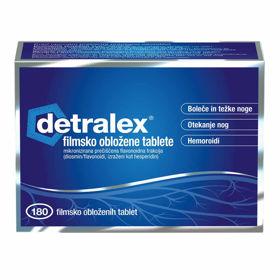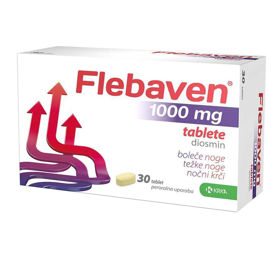Customer question:
How severe is leg vein inflammation? How can we help each other?
Pharmacist's response:
Phlebitis means "inflammation of a vein." A vein becomes inflamed because blood clots or the walls of the vein are excessively damaged. Superficial thrombophlebitis is the term for an inflamed vein near the skin's surface (a common varicose vein) caused by a blood clot.
Superficial thrombophlebitis in the leg is usually not severe. The blood clot usually resolves, and the inflammation subsides within a few weeks. Most people with superficial thrombophlebitis otherwise feel well. There should also be no nasty discharge or abscess, usually lumps under the skin, and no swelling of the whole leg. The mentioned problem can be painful, but this obstacle should not prevent you from walking normally.
Symptoms of superficial thrombophlebitis include:
- painful hard bumps under the skin
- redness of the skin
These symptoms usually appear on the lower leg, although they can occasionally affect the superficial veins on the arms, penis, or chest area.
The risk of superficial thrombophlebitis is higher if:
- you have varicose veins
- you are very overweight
- you are taking birth control pills or HRT (although this slightly increases the risk of blood clots)
- you are pregnant
- have had a blood clot or other vein problem in the past
- you have recently received an injection or a drip into a vein
- you have a disease that causes blood to clot more efficiently, such as thrombophilia, inflammation of the smaller arteries (polyarteritis), or a high concentration of red blood cells in the blood (polycythemia)
- you have or have had cancer
Treatment of phlebitis
Phlebitis is inflammation, not an infection, so antibiotics are not helpful. You can follow these tips to reduce pain and swelling:
- elevate the leg to reduce swelling
- ask your doctor if compression stockings would be suitable for you to reduce swelling
- stay active to keep your circulation active
- press a cold flannel on the vein to ease any pain
- take pain relievers or anti-inflammatory medicines such as ibuprofen – but if you have been prescribed anticoagulants (blood thinners), do not take aspirin or ibuprofen unless your doctor advises you to do so
- rub an anti-inflammatory cream or gel on the affected area
Medication detralex:
Detralex drug is used in adults and is intended to treat symptoms of chronic venous diseases. Chronic venous disease is located in the legs where the blood drains from the lower limbs too slowly, so the fluid passes through the wall of the capillaries (smallest vessels) and accumulates in the tissue. The venous disease manifests as painful or tired legs, feeling of heavy legs, itching, night cramps in the legs, the appearance of varicose veins (varicose veins) on the legs, and swelling of the legs.
The danger of deep vein thrombosis
There is a slight chance that a blood clot will travel down a vein to where it meets a deeper vein and develop a deep vein thrombosis (DVT). This is more likely if the superficial clot is in the upper thigh, groin, or knee area (where the superficial veins meet the deeper veins).
Deep vein thrombosis is also more likely to happen if:
- the affected vein is usual and not a varicose vein
- have you ever had DVT
- you are immobile
GVT can cause pain, swelling, and severe pain in the leg. See your GP immediately if you experience these symptoms.
Interesting reading: Varicose veins FORUM
Interesting reading: Veins and veins on legs











